The Hulk's most iconic personas
You think you know the Hulk? Well.... which one?
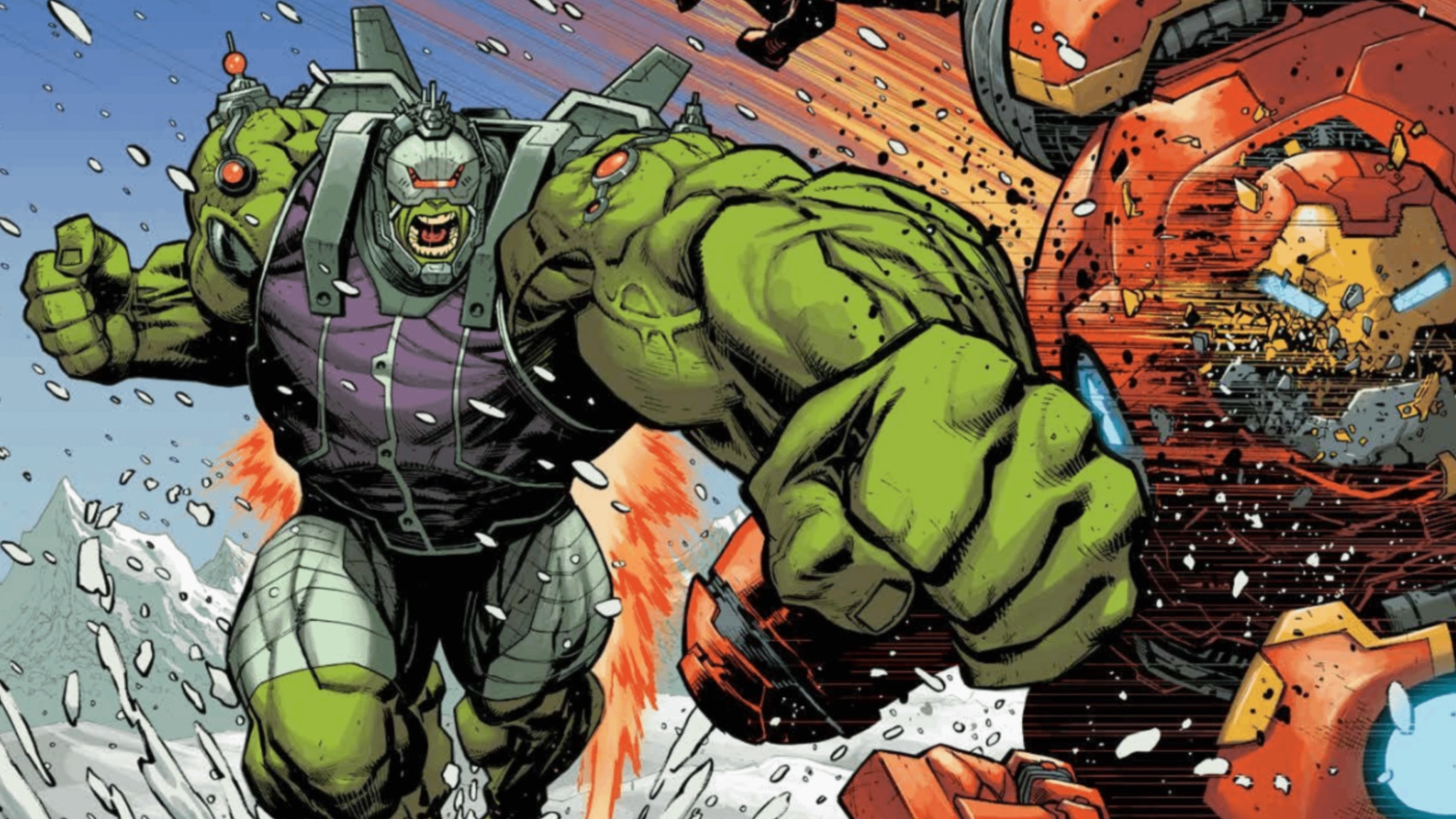
The Incredible Hulk has been one of Marvel Comics' most popular and recognizable characters basically since his 1962 debut (get ready to celebrate his 60th anniversary in 2022!).
Even though the easily relatable concept of the Hulk is straightforward enough - he's a guy who turns into a destructive monster when his rage takes hold - there's a lot more to how the Hulk works and who he is than this simple premise conveys.
Over the years, the Hulk has manifested in numerous ways, from his more monstrous, smash-centric incarnations, to the versions of the Hulk that balance some of his own incredible brawn with the brains of his human counterpart, Bruce Banner.
With writer Donny Cates and artist Ryan Ottley about to launch a new volume of the Hulk that takes him in a brand new direction (including straight into a massive throwdown with Thor), we're inspired to look back at the most iconic Hulk personas of all time.
10. Mindless Nightmare Hulk
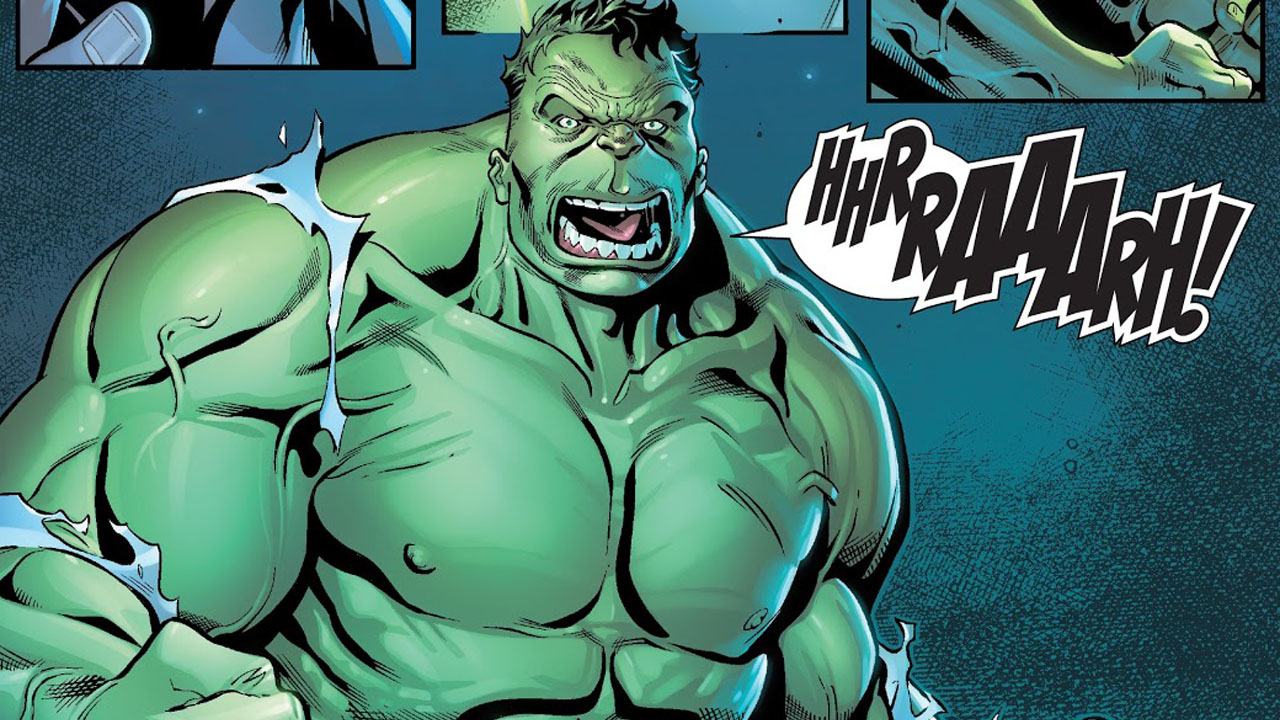
Oddly enough, one of the Immortal Hulk's first appearances was one of his weakest. Debuting in the weekly series Avengers: No Road Home, the Immortal Hulk, mere days away from his own solo series debut, found himself on a goth-infused team-up in Nightmare's Realm with Clint Barton (who had just murdered Bruce Banner in the pages of Civil War II) and Rocket Raccoon.
Serving as the series' C-plot, Hawkeye, Rocket, and the Immortal Hulk bicker and proselytize across Nightmare's realm only to have Nightmare himself take control of the Hulk's mind, directing his rage and newfound (and largely unexplored) cruelty toward Hawkeye, aiming for revenge. Through a nice use of the Hulk as a 'narrative weapon,' he stalks Clint and Rocket through their own nightmares like a Gamma-irradiated Jason Voorhees.
While interesting, this debut version of the Mindless Nightmare Hulk in No Road Home just scratches the surface of what the Hulk is capable of in the 'Immortal' era.
Comic deals, prizes and latest news
Get the best comic news, insights, opinions, analysis and more!
9. Venomized Devil Hulk
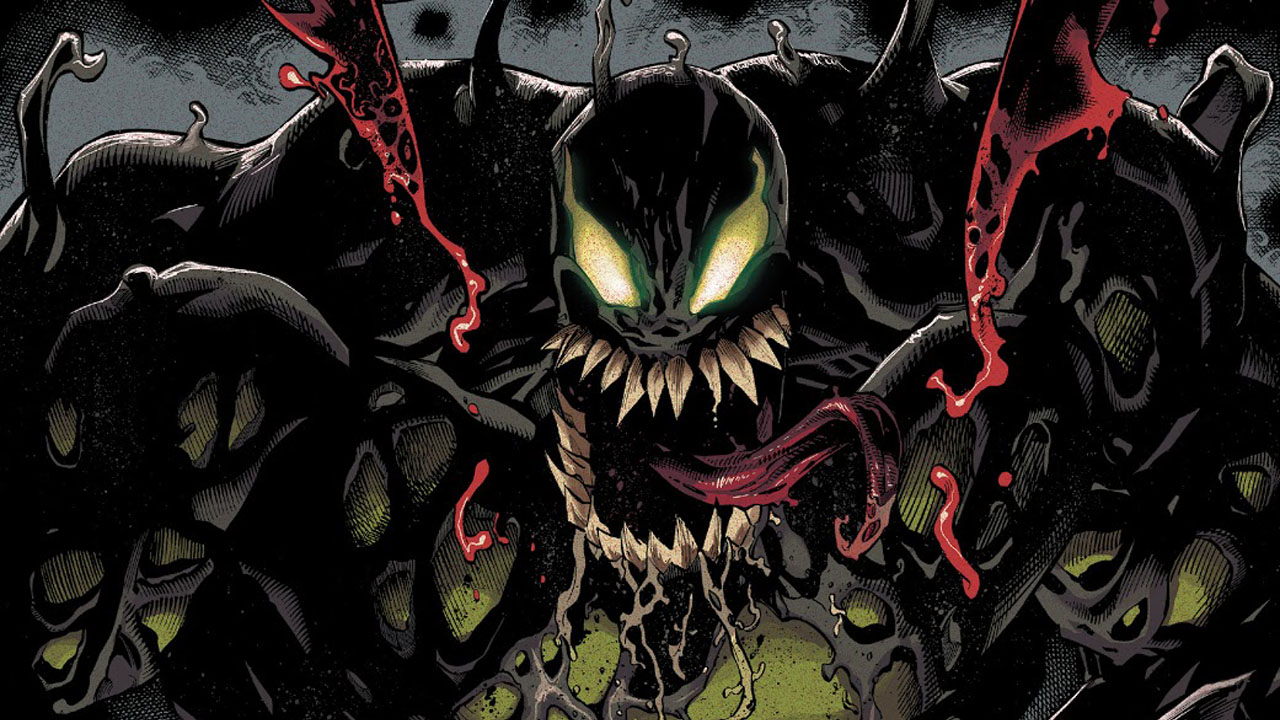
Yet another event appearance for the modern Hulk, but one that ultimately doesn't add much to the tapestry of the Immortal era, the Venomized Devil Hulk sort of just stumbles into the title for a set-piece and quick tie-in one-shot as part of Donny Cates and Ryan Stegman's Absolute Carnage,
Pulled into the event by virtue of having worn a Venom symbiote at one time, the Devil Hulk is overwhelmed by the ooze - transforming momentarily into a doubly terrifying version of the Devil Hulk, careening through the pages as the heroes and symbiote villain Carnage struggle to keep up.
Over in the tie-in one-shot Absolute Carnage: Immortal Hulk, the action is a bit more focused and directed as Immortal Hulk series writer Al Ewing (and future Venom co-writer) weaves a tale of Bruce Banner and Venom dealing with the stolen body of Thaddeus 'Thunderbolt' Ross - Hulk's longtime nemesis and a former Red Hulk and temporary symbiote host himself.
The story largely harkens back to some of the more Tales from the Crypt-inspired opening arcs of Immortal Hulk, as well as Ewing's efforts during the Defenders: The Best Defense limited series a few months before, but ultimately the Venomized Devil Hulk lives and dies only in the brief pages of these event comic books.
8. Doc Green
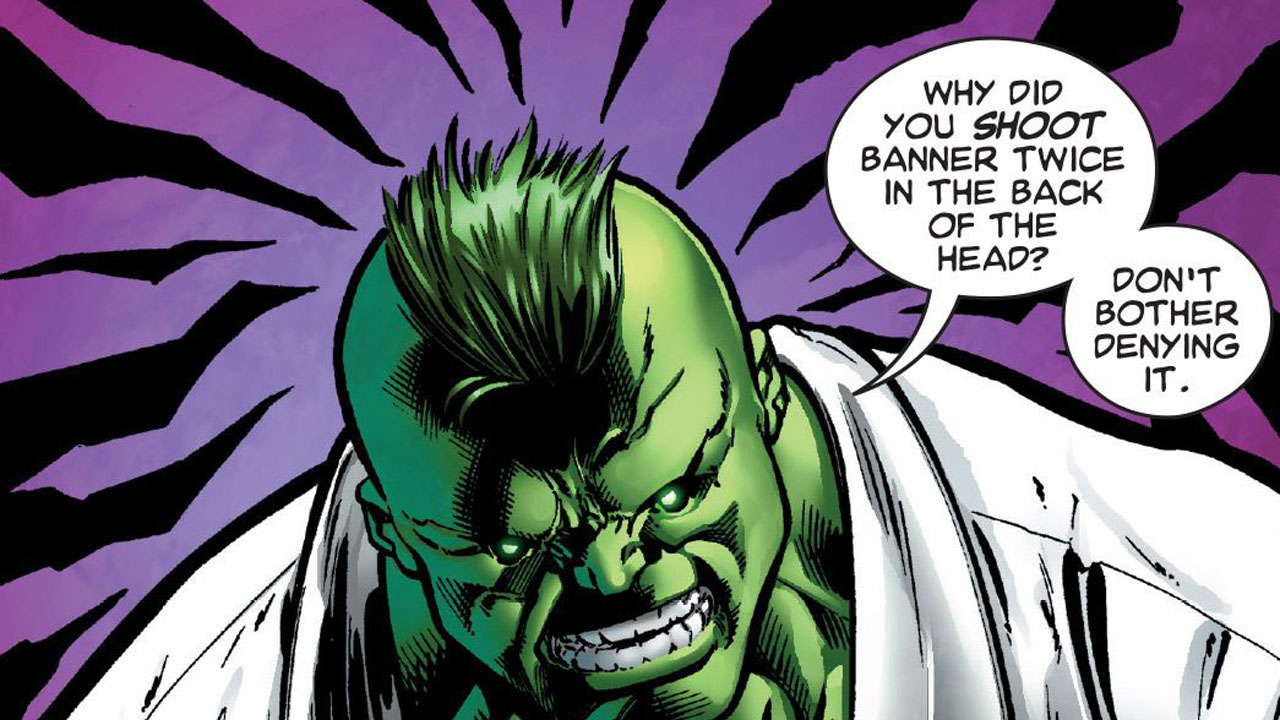
The closest the Hulk will ever be to being called an 'egghead,' the Doc Green persona was Introduced during the Peter David era of The Incredible Hulk, appearing sporadically in the years after before becoming an explicit part of Banner's mindscape in an Immortal Hulk cameo.
Though given a snappy, audience-pleasing version in Avengers: Endgame, Doc Green's real crime is he's just kinda boring.
Doc Green on the page should be a wonderful idea. A marriage of the brains of Banner and the brawn of the Hulk, Peter David famously treated him like a leading man, navigating through the marital woes of Rick Jones while leading monthly adventures with Shadow Base.
Hulk's ascension into the Doc Green persona also paved the way for him to become the villainous Maestro in an alt-future tale (more on him in a bit).
Despite all this, Doc has become a bit of an exposition monster since his comic book heyday, usually popping in and out of runs to info-dump science jargon and exposition on the reader.
7. Leader-Hulk
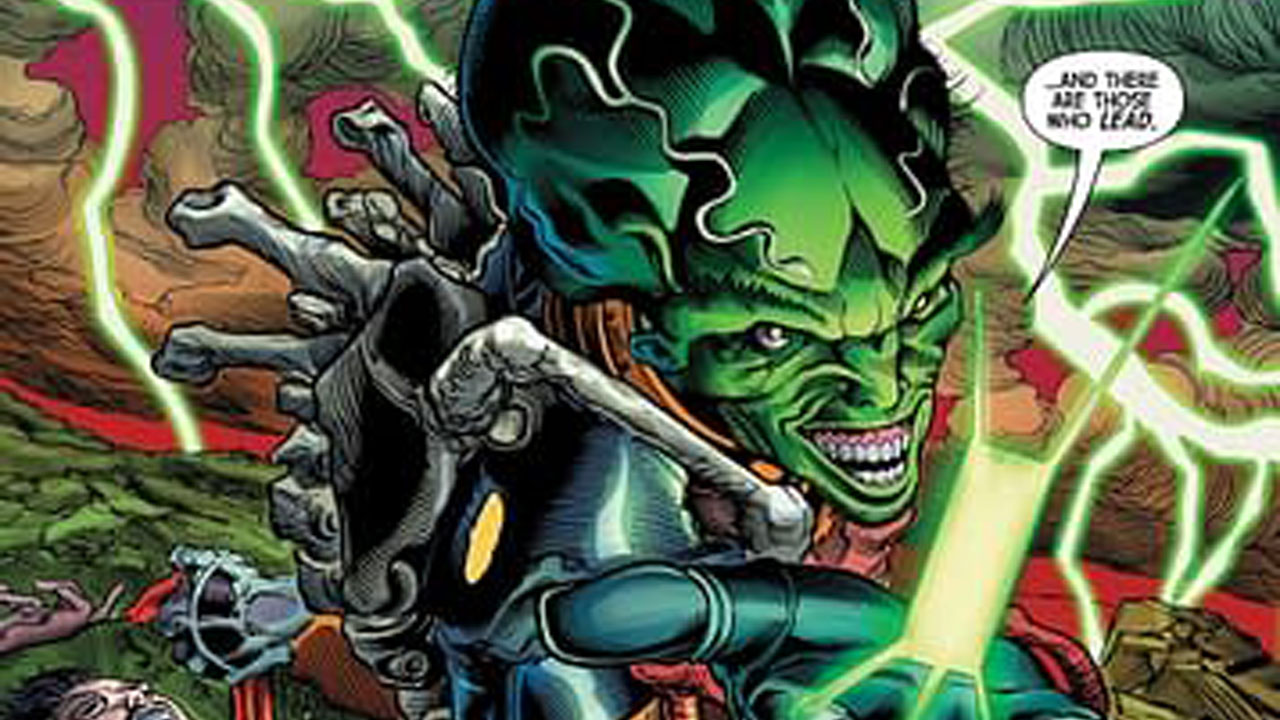
Once upon a time, Sam Sterns died. And then he died again. And again. And again.
And through those deaths he found the Green Door, allowing for the creation of the Leader-Hulk - yet another antagonist for The Immortal Hulk.
Given a truly striking, David Cronenberg-esque design by series artist Joe Bennett, the Leader-Hulk stepped into the pages of the series thanks to Sterns' newfound awareness of what comes after death and his control of the Green Doors; free-standing 'doors' into Gamma-mutates' minds and bodies.
After puppeting longtime Hulk co-star Rick Jones, Sterns manipulated the Devil Hulk into literally exploding, taking innocent lives and leading to Hulk's physical form being imprisoned in the Gamma Flight HQ while Sterns was able to slither into the Hulk's skin behind the scenes.
The scene is trademark Immortal Hulk body horror. And even though Leader-Hulk isn't exactly a 'system' of the Hulk on his own, he counts as another consciousness piloting Hulk's body to his own ends.
6. The Green Scar
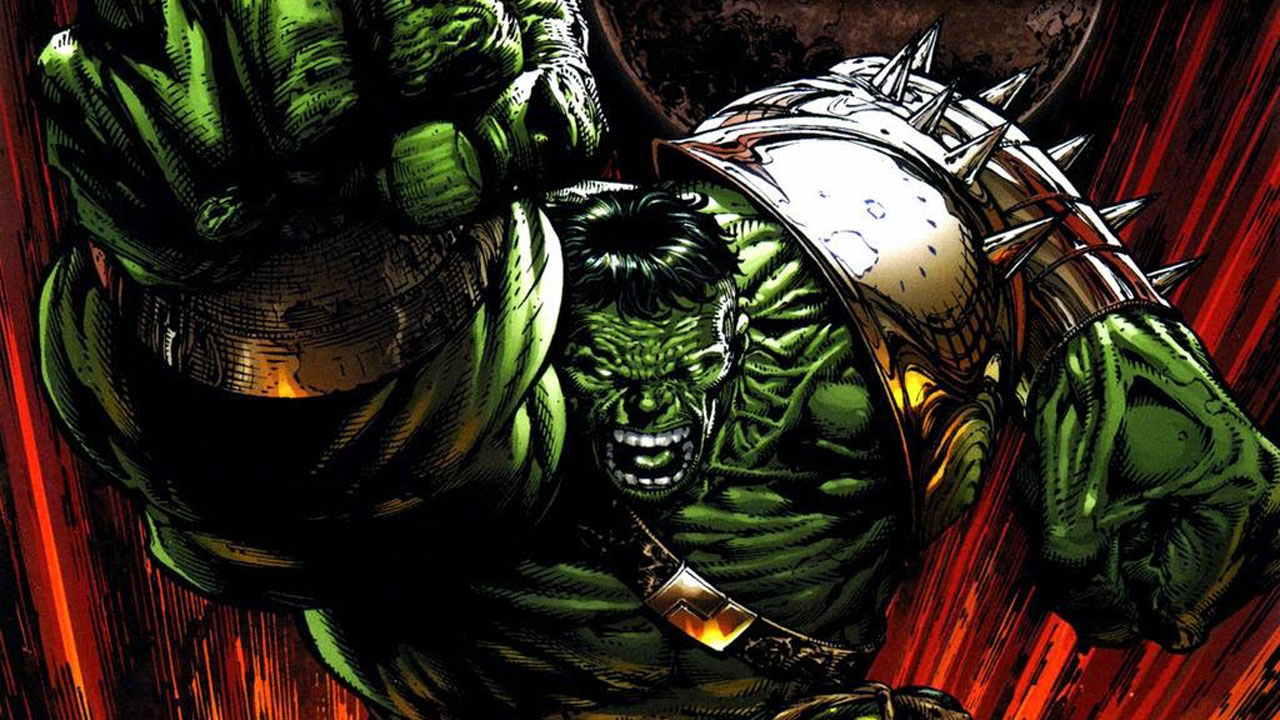
The Hulk's 'Conan' phase was of his most popular for over a decade, but has recently gained a melancholy edge in Immortal Hulk.
Introduced in the Greg Pak blockbuster Planet Hulk and re-debuting in Banner's mindscape during Immortal Hulk the Green Scar is the Hulk at his most noble (and most dangerous).
Blasted into space by Marvel's secret order of superheroes the Illuminati and forced into a constant Hulk-form by the barbarous conditions of the planet Sakaar, the Green Scar forms thanks to compounded trauma.
But the drive toward revenge and conquest hones him into a much deadlier, and wiser version of the Hulk, tempered by survival instinct and grim shrewdness which then carries him back to Earth, aiming for revenge against his former allies.
5. Maestro
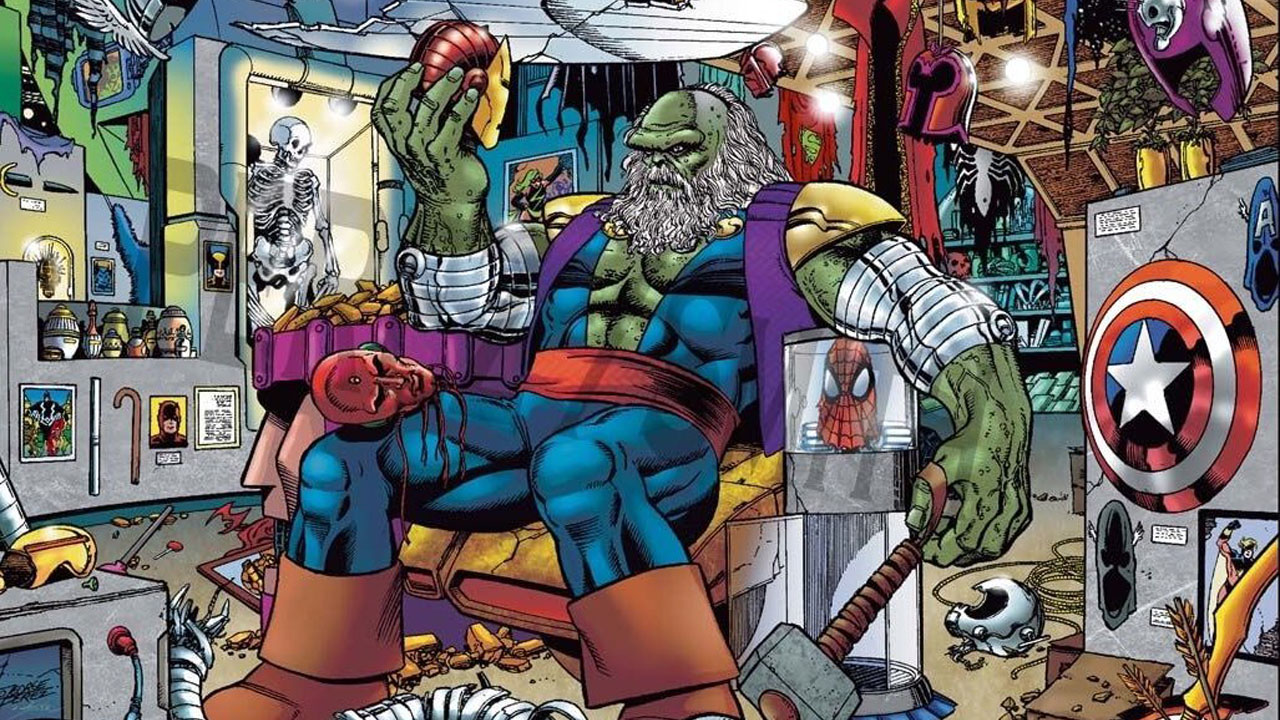
Standing as a hellish marriage of Banner's intelligence and the Hulk's occasional cruelty, the Maestro has haunted the mind of Bruce Banner for decades now.
First teased in the pages of Peter David's The Incredible Hulk, but fully introduced in 1992's Future Imperfect, David and iconic artist George Perez struck green gold with the creation of the Maestro - a ramped up, villainous progression of Hulk's super-strong, super-smart Doc Green persona.
Like many of the Hulk's alters, Maestro was born of tragedy and immense pain, surviving nuclear war only to be brainwashed alongside many other survivors into a fake virtual reality world built by AIM meant to distract them from the wasteland conditions of the real world. Seeing through the illusion, Maestro led the survivors out of AIM's clutches – and right into his own.
Once free of AIM, Maestro didn't save the world – he smashed it, hammering his relentlessly brutal timeline into a dystopian kingdom under his rule. Over the years, he's popped up as a villain in other timelines of the Marvel Universe.
Maestro remains popular as a villain and as a leading man, with David recently returning to Maestro for a series of stories further exploring his origins.
4. Breaker of Worlds
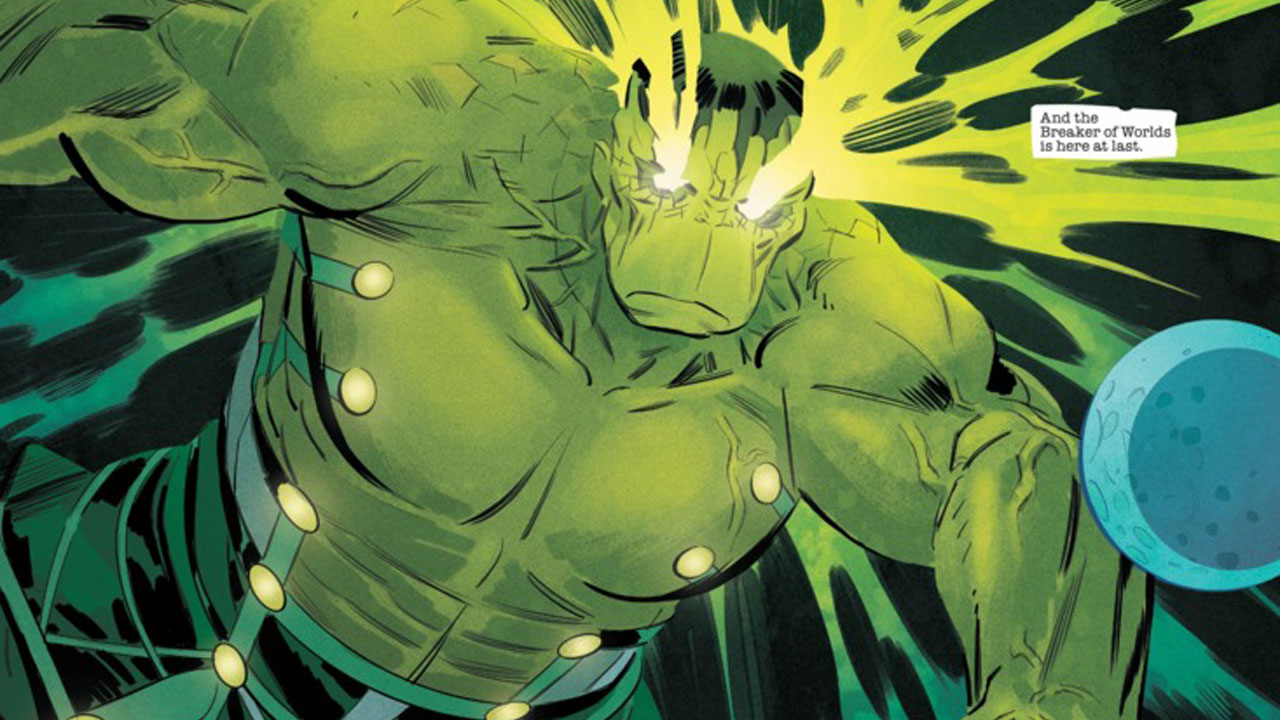
Eons from now, at the end of time, only the Hulk will remain - and he'll leave nothing but destruction in his wake throughout the cosmos.
First theorized as a possible evolution of Hulk by Amadeus Cho in World War Hulk but made nightmarishly explicit in the show-stopping Immortal Hulk #24 and #25, the Breaker of Worlds persona is a Hulk 'system' with enough rage-fueled strength to live up to his ominous name.
Cho theorized that the Hulk could someday turn so powerful, so consumptive, that he could possibly destroy entire worlds in his hands - and in the coda of Immortal Hulk #24, Al Ewing proved him right, showing a Banner and Hulk who had lasted beyond the heat-death of the universe, standing alone to greet the Sentience of the Cosmos to herald the next age.
Hulk promptly.. .well... ate them, growing to a new cosmically powered form who can punch apart whole planets and dominate reality under his green thumb.
Massive in both size and power, the Breaker of Worlds portends a grim finale for Hulk's life - though with countless eons between the present day and the universe's end, anything could happen to alter Hulk's fate.
3. Devil Hulk
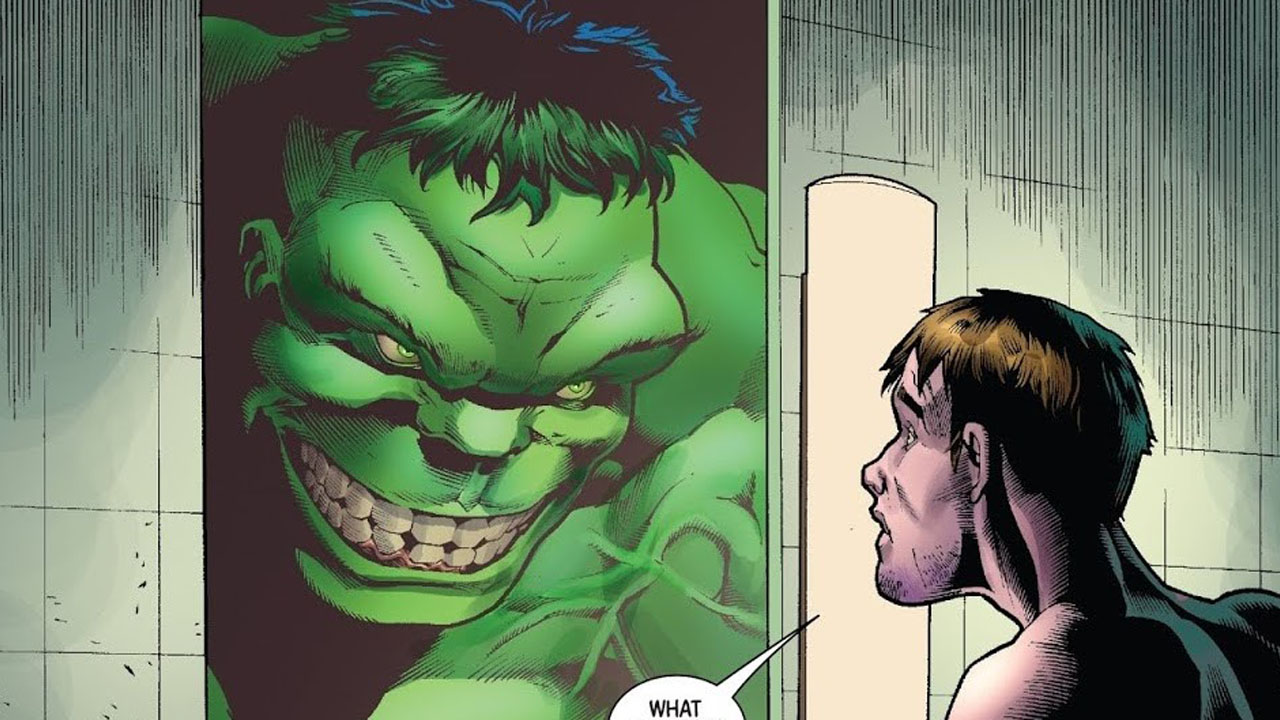
This Hulk only comes out at night. Because the nighttime is his time.
Though Bruce Banner's transformation into Hulk originally occurred at nightfall, with his anger-induced transformations coming a short time later, Al Ewing was the first writer to give the specifically nocturnal version of the Hulk a name in the pages of Immortal Hulk.
Set up as ostensibly the lead character of Immortal Hulk alongside Banner, the Devil Hulk was instantly different than any other Hulk we had seen before - even in Hulk's early stories that inspired the eventual Devil Hulk concept.
Callous and sometimes gleefully cruel, the Devil Hulk can smell lies, has a strong moral code that he refuses to explain, and often operates purely on an almost instinctual drive to dispense his own sometimes twisted brand of justice.
2. Joe Fixit / Grey Hulk
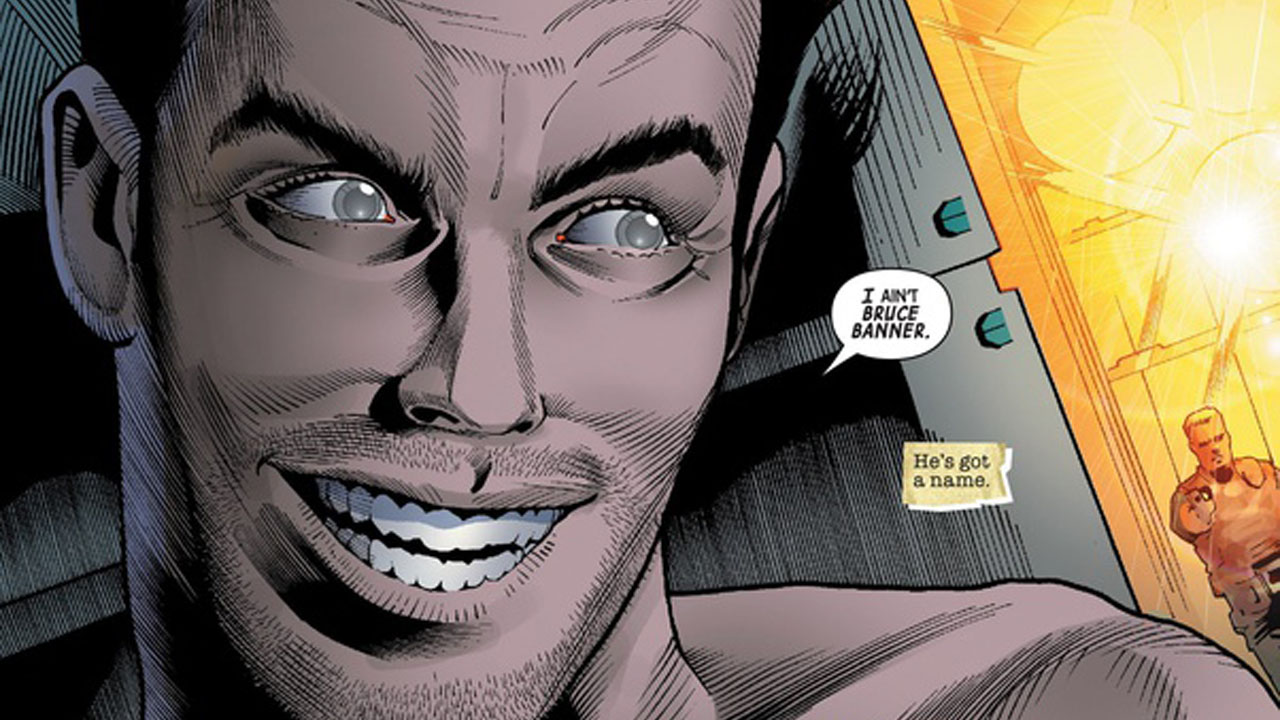
He's got a name. Maybe you've heard it?
Introduced in the Peter David/Todd MacFarlane era of Incredible Hulk, Joe Fixit, or the Grey Hulk (thanks to his grey skin, which called back to early printings of the Hulk's first appearance in 1962's Incredible Hulk #1) instantly became a fan favorite. Abrasive, brash, and more than a little '40s gangster, Joe Fixit became one of Las Vegas's most feared enforcers and led the Peter David Hulk era to new heights of popularity.
Though he's always a fan-favorite when he rears his big galootin' head, Joe Fixit has taken on a whole new life of his own in Immortal Hulk, where he's become almost more of an 'alter' for Bruce Banner specifically than the Hulk.
Once bound to the super-powerful physical form of the Hulk (which he took on when the sun went down, much like the Devil Hulk), Joe Fixit's personality manifested in Bruce Banner's body at a particularly dire moment for the Hulk, ensuring his escape from the villainous General Fortean – a feat he later repeated by manifesting in Banner's body to escape confinement with Gamma Flight.
1. The Big Guy
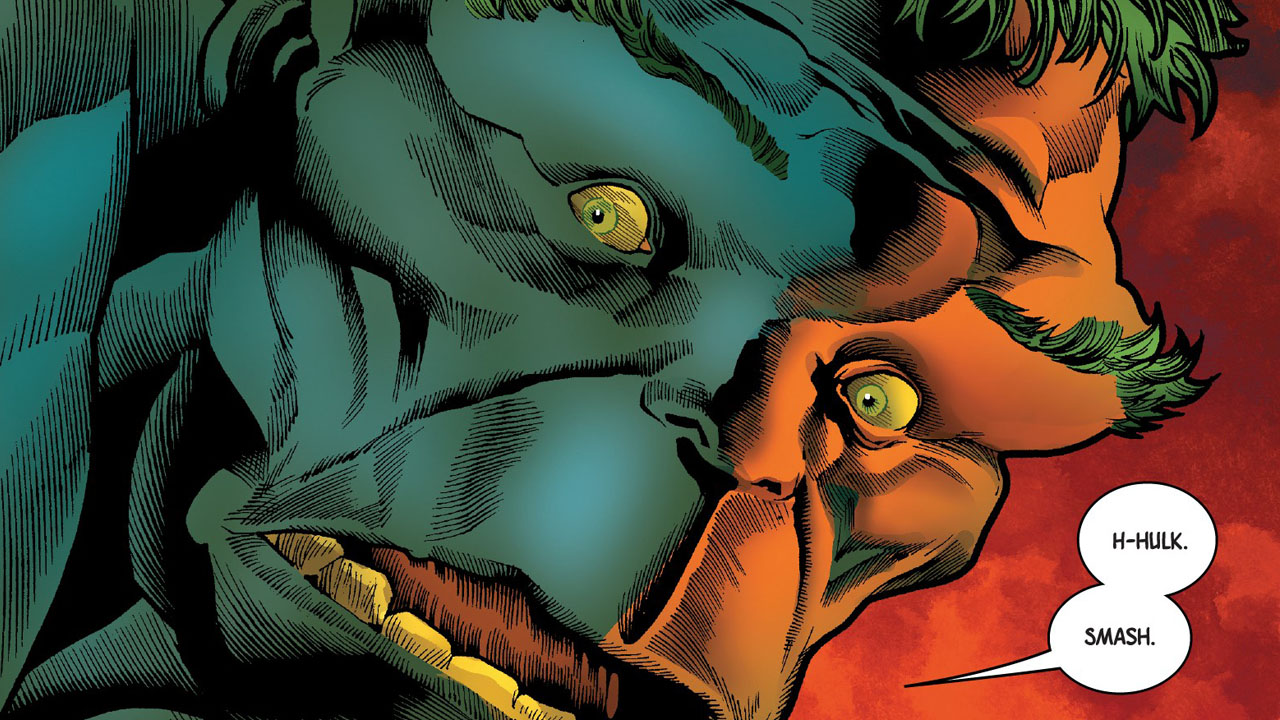
One of the oldest standing 'systems' of the Hulk, the child-like and immensely powerful 'Big Guy' is what most people usually think of when they think of the Hulk (the MCU Avengers have even used the same nickname for Banner's brutish alter ego).
Introduced in Tales to Astonish (with Immortal Hulk formally implementing the 'Big Guy' nickname), the Big Guy is your 'classic' Hulk persona. Hunched, monosyllabic, and quick to anger, the Big Guy wrought untold destruction in his early days due to simple misunderstandings and chance encounters with some of Marvel's other superheroes.
But more than that, there's a deep sadness that dwells within the Big Guy's even bigger heart, picking up on the idea that in that form, he is in constant physical pain thanks to both the Gamma radiation of his body, and the toll of his constant battles.
Check out Newsarama's list of the best Hulk stories of all time.
Justin Partridge is a freelance journalist who can be found at GamesRadar+ and Newsarama writing reviews about the best comic books out there. He's also known to put his encyclopedic knowledge of the industry to work by exploring some of the biggest events in comic book history.


